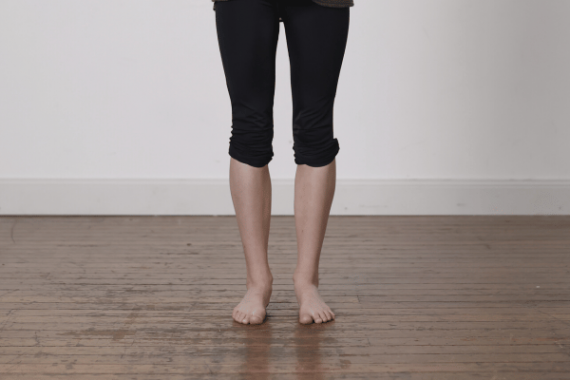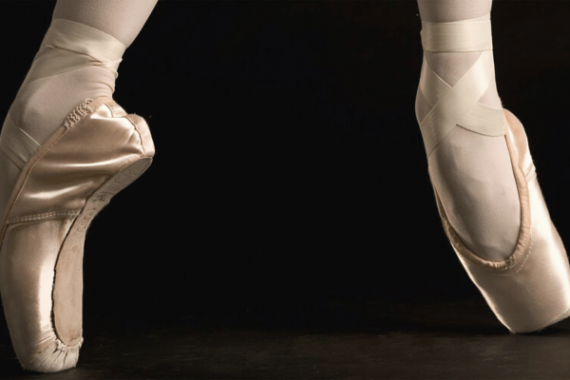- Free Articles
- Shop
- Workshops
- The Dance Educator Series
- L1 – The Fundamentals
- L2 – Pointe Intensive
- L2 – Flexibility Intensive
- L2 – Training Turnout in Tiny Dancers
- L3 – Foot & Ankle Injuries in Dancers – NEW
- L3 – Hip Injuries in Dancers
- L3 – How to Train Extreme Mobility Safely
- Upcoming Workshops
- Workshop FAQ’s
- Workshop Testimonials
- Host Application Form
- Dance Teacher & Health Professional Directory
- Members Areas
- Cart
- My Account
The front of the ankle is as common an area for dancers to get injuries as the back of the ankle is where dancers most often get pain. For this reason, their pain may be overlooked as disregarded but it can actually be a good indicator of some technical problems. When trying to diagnose the causes of pain at the front of the ankle we need to look at the structures that may be contributing to the pain. The structures at the front of the ankle include mostly tendons and ligaments so this rules out a lot of muscular issues and possible fractures.
Often young dancers have not been using their full pointe range when working on demi-pointe and when they start into their pointe shoes, these ligaments can be stretched as the foot is pushed into its end range, without the strength to control this range. Not being able to work to full range indicates that there is insufficient strength in the lower leg and the ankle of the dancer and needs to be addressed through careful conditioning exercises.
Flexible arches are prone to instability so not only does the dancer have to work on achieving full range and the stamina of the muscles to stay en pointe but also on the stabilising muscles around the side of the ankle to maintain a good alignment. This does include strengthening work but also proprioceptive work so that the dancer can instantly recognise when the ankle is misaligned and can correct the line. Poor alignment through the ankle, like sickling, can also place extra stress on the ligaments on the outside ligaments at the front of the ankle. More information on how to improve the dancer's stability and proprioception can be found in The Perfect Pointe Book.
Both these factors may be contributing factors to the development of pain through the front of the ankle. Assessing whether the dancer has insufficient range or strength can be done through our Seated Pointe Rise video as below. Next is our video Bent knee calf rises which assesses whether the student is able to hold their ankle at full range or if the muscles required to maintain full range also have insufficient strength.
If the dancer has an insufficient range and cannot achieve the optimal range necessary for pointe work or the requirements for a good demi-pointe line; a straight line through the hip, knee, and foot then this can also place extra stress on the structures at the front of the ankle. In this case, the dancer will need to work to improve their pointe range to achieve this line. Our program "How to Improve your Pointe Range Safely Without a Foot Stretcher" can help guide you through the necessary steps to increase your foot mobility.
Next, you need to see if the dancer is gripping with the front of their ankles as this can often contribute to any pain at the front of the ankle due to excess strain being put through the tendons and ligaments that run over the area. Have a look at the video below.
Finally, pain at the front of the ankle can often be the result of incorrect fitting of pointe shoes or inadequate "breaking in" of the shoes to fit the dancer correctly. There may be a problem with the shank of the shoe not rising high enough or even too far. The breaking-in process is extremely important to get right as there needs to be enough stiffness in the shank of the shoe to give the dancer support but also enough give in the right places so that the dancer can rise up well over the box. Inaccurate flexure points in the shank will result in the dancer not feeling safe en pointe and some gripping through the front of the ankle. The shoe needs to be broken so that when the dancer is up en pointe the shank sits snugly against her foot.
One thing I would do is look at the shape of the front of her arch when she rises on two feet in parallel (as high as the dancer can in no shoes) versus rising en pointe in parallel. If she has developed the appropriate strength to position her feet in pointe shoes then the shape of the front of the arch will be similar, however often in young students, they will demonstrate a difference in range. This may help elucidate as to whether the problem is with the shoes or with her strength.
In the meantime, I would avoid jumping and relevé in class until the cause of the problem can be identified. The slow rises used for strengthening should be ok, and she can practice doing these in class while the others are jumping. Working through all of Stage One and Two of The Perfect Pointe Book will help identify where the causes of the pain are.
Pointe Resources
If you are looking to delve deeper into this topic, check out the following programs:
- The Perfect Pointe Book: This course was originally designed to help students and dance teachers safely prepare for pointe work. The four stages of tests and exercises within the book are ideal for pre-pointe preparation classes, students close to achieving pointe shoes and students already en pointe looking for extra strength and technique training.
- Pointe Range: This online program comprises of 41 clear and concise videos, totalling just under 2 hours play time, this course begins with a series of assessments to establish exactly what structures are restricting your pointe range. It then explores a diverse array of massage techniques, joint mobility exercises and fascial mobilisers to safely improve your pointe range. This is followed by an in depth look at retraining all of the muscles that stabilise the foot and ankle to allow you to actually use your new found pointe range in class.
- Pointe Intensive: This online virtual workshop is designed for both Dance Teachers & Health Professionals working with dancers. This three day Intensive will give you the most up-to-date advice in the industry to help you understand your students’ needs, analyze their differences, and them you the tools to help your students become the best dancer they can be.







